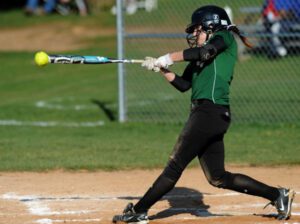Reading Basic Coverage As A High School Quarterback
The key to any good offensive football team is to know and understand the defense they’ll be facing in a given week. Among other things, two of the major advantages that an offense holds over the opposing defense is knowing the snap count and if the call is a pass or run. Additionally, understanding that the secondary coverage is predicated on the defensive front helps the offensive player to know who to block and or where to run his pass routes. In many scenarios, it’s up to the defenders to react on-the-fly, so use this to your advantage. Being prepared before a game helps you exploit the gaps in defenses, so there’s no excuse to be well-versed.
But, before you can master it, you must know the general ideologies behind some of the defenses you’re most likely to face. Luckily, CoachUp is here to help you with some of the basics!
First things first, let’s take a look at the basic kinds of defenses and the two most common forms, the 4-3 and 3-4. The first number refers to the number of defensive lineman and the second refers to the number of linebackers in the scheme. Thusly, in a 3-4 defense, there are three linemen and four linebackers, and vice versa for 4-3. Of course, there are eleven men on the field per side, so you’ll most likely have four men left in the secondary, frequently seen as cornerbacks and safeties.
Tips For The Quarterback
First, locate the two safeties. Frequently, you’ll see either a one or two high set. Being in a one high set means that the defense is formatted with just one safety patrolling the middle of the field in case of a long throw. A two high set simply means there are two safeties, placed twelve to fifteen yards off the line of scrimmage and aligned on the hash marks.
The best teams won’t predetermine where the quarterback will throw his passes, but finding the safeties really helps figure out the best way to attack a defense. Some athletes like Aaron Rodgers and Peyton Manning are so gifted at reading the defense, that they’re given free reign at the line of scrimmage. Being able to determine what you’re going up against allows the fluid adjustments that win games. Additionally, even at the lowest levels of football, it’s important not to seriously dictate where the ball will go before snapping the ball.
It’s too mechanical when you start thinking about it this way: OK, snap, drop back, look for WR #1, throw to WR #1, rinse, repeat. What happens if that wide receiver is blanketed? By the time you recognize Plan B, there’s a very good chance you’ll be sacked instead.
As a young player, make sure you’re allowing yourself to read the defense at the line, realize where their safeties are, what scheme they’re set up in and go from there.
If they’re set up with the one high look, attack the sidelines. With just one deep safety trying to patrol the entire area of the field, they’re most vulnerable near the sidelines. In this scheme, you should be able to get many one-on-one match-ups between your wide receiver and the back guarding him. With the one safety set downfield and in the middle, he has to be careful not to overcommit to either direction.
If they’re set up with the two high look, stretch the two safeties out by lining up your receivers at separate sides, this will, generally, force them to shade over closer to those spots, leaving the deep middle open. Using two safeties may keep everything underneath them, but forces the linebackers to play in pass coverage, which, in most cases, is not ideal. If you’ve got a tight end like Rob Gronkowski or Jimmy Graham, the sight of two high safeties should be drool-worthy.
Here, you’ll see a linebacker trying to contain a speedy, lethal athlete most usually suited for a corner. Additionally, right in front of the safeties, but right behind the backs, there should be natural, open space for receivers to run their routes through. An accurate quarterback can not only recognize the defense, but also make the throws that best exploit it.
(Related: Read About The Most Important Quarterback Fundamentals here.)
Huddle Up
As a test, can you tell us what is going on in the diagram we posted above? Are they in a 4-3 or 3-4? Where are the safeties? If you can nail this, you’ve already won half the battle, now go out and practice it! If you’re still having trouble analyzing the field in front of you, don’t worry! CoachUp offers tons of private trainers that can help you take your game to another level.
Reading the defense isn’t an easy task, especially when you’re asked to do it on the fly, but our coaches can help you learn how to handle it. Next thing you know, you’ll be flinging touchdowns with ease — so what are you waiting for?
How useful was this post?
Click on a star to rate it!
Average rating 4.7 / 5. Vote count: 6
No votes so far! Be the first to rate this post.




